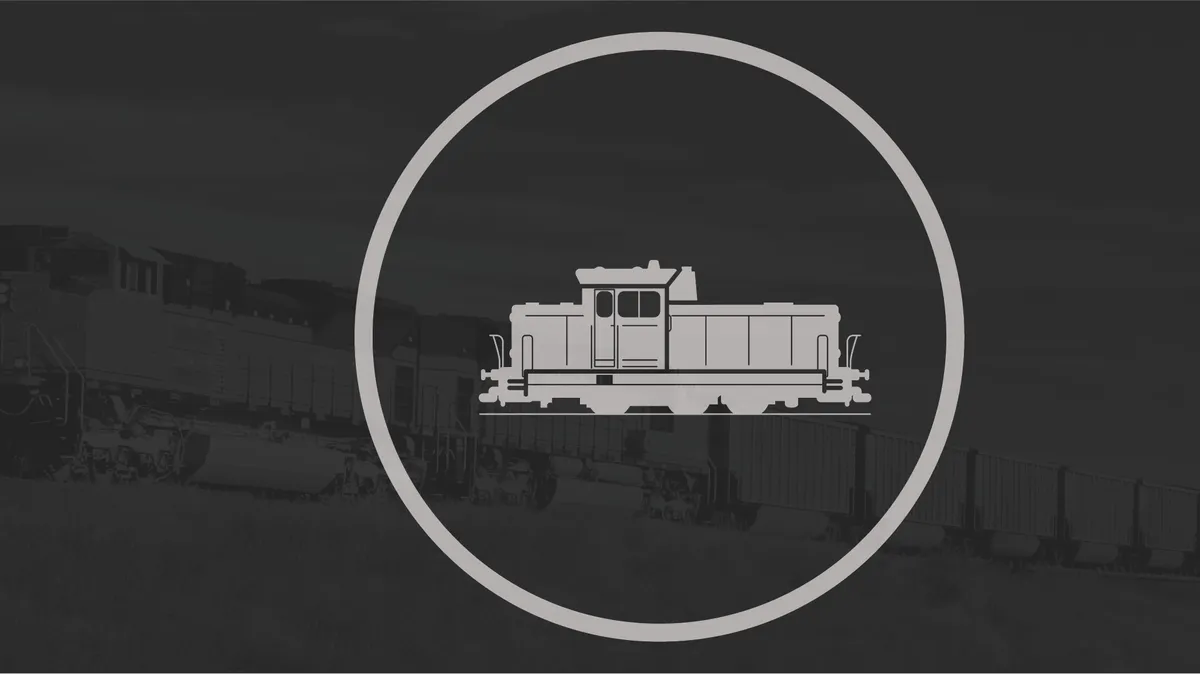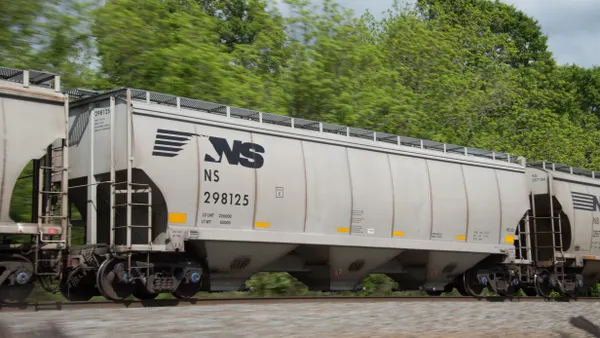Dive Brief:
- U.S. railroads originated 927,084 carloads in February 2020, a 7.3% (year-over-year (YoY) decline). Railroads also originated 997,683 intermodal containers, a nearly 9% YoY drop, according to the latest numbers from the Association of American Railroads.
- The COVID-19 outbreak has led to blank sailings and a reduction in imports at U.S. ports, which translates to less container volume for intermodal businesses, Moody's analysts wrote in a note shared with Supply Chain Dive.
- "Like the freight railroads, lower container volumes would weigh on intermodal truck carriers at a time when volumes are already under pressure from heightened competition from traditional truck carriers, as well as last year's lane closures by some freight railroads as part of their efforts to discontinue services that did not meet internal return hurdles," the note reads.
Dive Insight:
Intermodal carriers have already had a tough year because low spot rates in the trucking market meant shippers were turning to the highway rather than the railway. But early signs suggest intermodal might be the first to take a hit from COVID-19.
The year-long downward trend for intermodal makes it harder to point to COVID-19 as the reason for the February drop, AAR Senior Vice President John Gray said, but he acknowledged that declines in port activity will ripple to railroads. The drop off in port volume has already begun to show up in February port reports.
"The headwinds facing railroads that pre-date the virus include lingering trade impacts and economic uncertainty; severe winter weather in parts of the country; blockades in Canada that shut down rail traffic there and impacted domestic traffic too," Gray said.
Western railroads — BNSF and Union Pacific — are likely to feel the impact of COVID-19 first, as they would be first to handle the volume coming from China. "With longer steaming times, we would expect the Eastern railroads to experience lower volumes shortly," ACT Research wrote in a note emailed to Supply Chain Dive.
CSX CEO Jim Foote said the railroad hasn't yet seen volume changes from extended production shortages but expects impact on intermodal "in the coming weeks," he said at an investor conference Wednesday. "Our hope is the increased activity levels in China will begin restocking the supply chain quickly."
"At this point, we expect a sharp but short decline in economic activity, but the situation continues to evolve quickly," Tim Denoyer, ACT Research vice president and senior analyst, said in a statement. "With a likely inventory restock in the second half, among several tailwinds, there is a case for recovery in freight. And with capacity coming, we think the outlook for improving truckload rates is fairly resilient to COVID-19."
The COVID-19 outbreak is expected to impact both the supply (factories in China and elsewhere) and demand (shopping around the world) ends of the supply chain. On the demand side, Moody's is now forecasting the automotive sector will see a 2.5% decline in sales for 2020. As shippers see demand for their products shrink, this will be passed along to carriers in the form of decreased demand for freight.
Prolonged demand decline could also impact trucking companies and parcel delivery companies, but UPS and FedEx could benefit in the short term from increased demand for airfreight out of China, Moody's said.















